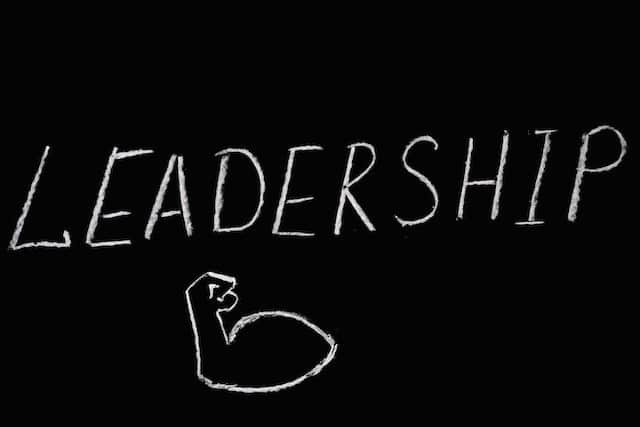Leadership has always been a widely discussed topic, touching on various perspectives like the qualities of a good leader, leadership styles, and the impacts of leadership on the growth and development of an organization. However, a perspective that remains less explored is the role of gender in leadership. Specifically, do men and women leaders motivate followers differently? This article aims to delve into this topic, providing insights into the distinct ways men and women in leadership roles inspire their teams and the potential implications of these differences.
Historical Perspective and Prevailing Stereotypes
From a historical perspective, leadership has largely been a male-dominated field. Men were traditionally viewed as the “breadwinners” and the leaders, not only in their households but also in the workplace. However, as societies evolved and gender roles began to shift, more women started to occupy leadership positions, challenging the stereotypes associated with leadership.
Despite these advancements, gender stereotypes in leadership persist. Men leaders are often seen as assertive, dominant, and task-oriented. In contrast, women leaders are usually perceived as nurturing, cooperative, and relationship-oriented. While these stereotypes can sometimes reflect reality, they often oversimplify and overlook the complex and diverse ways men and women lead and motivate their followers.

Theoretical Framework: Understanding Different Leadership Styles
Leadership styles play a crucial role in understanding gender differences in leadership. Here, we’ll focus on three primary styles: transformational leadership, transactional leadership, and laissez-faire leadership.
Transformational leadership involves inspiring followers to exceed their own self-interests for the good of the organization. Such leaders are often charismatic, inspiring, and focused on team-building and collaboration.
Transactional leadership, on the other hand, relies on rewards and punishments to motivate followers. This style is more focused on maintaining the status quo and managing day-to-day operations.
Lastly, laissez-faire leadership is characterized by a hands-off approach, where leaders provide their teams with a lot of autonomy.
While these styles aren’t exclusive to one gender, research suggests that women leaders tend to lean more towards transformational leadership, while men leaders often employ more transactional techniques. However, the degree of these tendencies can vary widely among individual leaders.

Gender Differences in Motivational Techniques
Motivation is a key aspect of leadership, and gender differences in this area are particularly interesting. Research suggests that male leaders are more likely to use power and authority as motivational tools, often setting high expectations and pushing their teams towards ambitious goals. They tend to use a more direct, assertive approach and are often more task-oriented.
In contrast, female leaders are often more focused on relationship building. They tend to motivate their teams through empathy, understanding, and emotional intelligence. Women leaders are generally more inclined to use a collaborative approach, encouraging participation and open communication within the team. They often prioritize creating a supportive environment that fosters personal growth and development.
Factors Influencing Gender Differences in Leadership and Motivation
The reasons behind these gender differences in leadership and motivation are multifaceted, involving societal expectations, personal traits, cultural factors, and organizational culture.
Societal expectations play a large role, as men and women are often expected to behave in certain ways based on traditional gender roles. Personal traits, such as empathy, assertiveness, and ambition, also factor in, as they can influence an individual’s leadership style and motivational techniques.
Cultural factors can also contribute, as different cultures have different expectations and norms regarding gender roles. Lastly, organizational culture can significantly impact how leaders behave, as companies may have their own set of values, expectations, and norms that influence leadership styles and motivational technique.

Implications of Gender Differences in Leadership
The differences in how men and women motivate their followers can have various implications. For instance, a more assertive, goal-oriented leadership style might drive a high-performing, competitive work environment. Conversely, a more supportive, relationship-focused leadership style might foster a more collaborative and inclusive work environment.
However, both styles come with their own set of challenges. A highly competitive environment might cause stress and burnout, while a highly collaborative environment might struggle with decision-making and efficiency. Therefore, it’s crucial for organizations to find a balance that suits their unique needs and goals.
Overcoming Stereotypes and Embracing Diversity in Leadership
Understanding these differences can help overcome stereotypes and foster more diverse and inclusive leadership in organizations. It’s crucial to acknowledge and value the diverse ways men and women lead and motivate their followers. Moreover, organizations should aim to create an environment where both male and female leaders can thrive, embracing a wide range of leadership styles and motivational techniques.
Conclusion
In conclusion, while men and women leaders do tend to motivate their followers differently, these differences should be seen as complementary rather than contradictory. The key to successful leadership lies not in adhering to gender stereotypes, but in understanding and leveraging the unique strengths that both male and female leaders bring to the table. After all, diversity in leadership can only serve to enrich an organization, fostering a more inclusive, balanced, and effective work environment.
References
- Eagly, A. H., & Carli, L. L. (2007). Through the labyrinth: The truth about how women become leaders. Boston, MA: Harvard Business School Press.
- Bass, B. M., & Riggio, R. E. (2006). Transformational Leadership (2nd ed.). Psychology Press.
- Heilman, M. E. (2001). Description and Prescription: How Gender Stereotypes Prevent Women’s Ascent Up the Organizational Ladder. Journal of Social Issues, 57(4), 657-674.
- Northouse, P. G. (2018). Leadership: Theory and Practice. Sage Publications.
Further Reading
- Catalyst, Quick Take: Women in Management (2021). This report offers recent data on women in management roles globally, examining the barriers they face and the impact of female leadership.
- Sandberg, S. (2013). Lean In: Women, Work, and the Will to Lead. Knopf. This book by Facebook COO Sheryl Sandberg explores issues surrounding women in leadership and offers advice for women aiming to achieve leadership positions.
- Kellerman, B., & Rhode, D. L. (Eds.). (2007). Women and Leadership: The State of Play and Strategies for Change. Jossey-Bass. This book examines why women are underrepresented in leadership roles and suggests strategies for change.
- Eagly, A. H., & Johannesen-Schmidt, M. C. (2001). The Leadership Styles of Women and Men. Journal of Social Issues, 57(4), 781-797. This study examines gender differences in leadership styles and their implications.

















